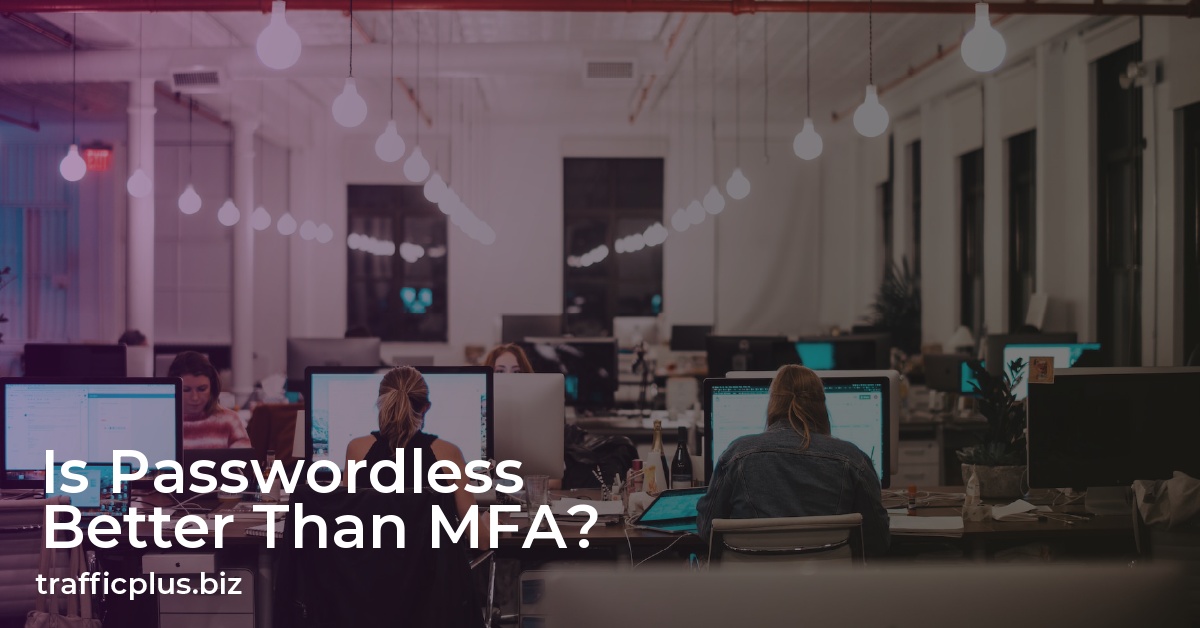
Passwordless authentication is a method of confirming a user’s identification without needing a password. Instead, passwordless uses more secure methods such as possession factors (one-time passwords (OTP), registered devices, or biometrics (fingerprint, retina scans).
For a long time, passwords have not been secure. As thought leader Transmit Security has shown, they are difficult to recall and easily misplaced. They are also the most popular target for cybercriminals. So much, so that weak or stolen passwords account for 81% of all breaches.
We’ll discuss passwordless authentication in further depth in the upcoming piece.
What Is MFA (Multi-Factor Authentication)?
Before you can access a resource, MFA requires two or more verification criteria.
There are several varieties of MFA, and not all are equal. Here are some common multi-factor authentication techniques.
- Another password. This information can look like, “what street did you grow up on” or “what is your mother’s maiden name”. But because it is another shared secret, it still has the same weaknesses.
- A second device or a hardware token. Another version of MFA delivers your smartphone push alerts, SMS codes, or emails. A hardware token generates a timer-based code that is not communicated via a network.
- Biometrics. Fingerprints and face recognition saved securely on the device in a secure enclave or TPM are the most secure type of MFA. Biometrics saved in the cloud or across a network is a shared secret and significantly more susceptible because they are unchangeable.
Adding multiple factors is always preferable to using a password alone. Nonetheless, many classic MFA criteria are weak, and the toll these extra variables have on users is not insignificant. Traditional MFA adheres to the belief that “it can be either secure or easy, but not both.” They prioritize security at the expense of user experience.
It is now feasible to have robust authentication that is simple to use – much simpler than using a password alone.
Types of Passwordless Authentication
Passwordless authentication can be accomplished in a variety of ways. Here are a few examples:
- Biometrics. Physical characteristics such as fingerprints or retina scans and behavioral characteristics such as typing and touch screen dynamics are utilized to identify a person uniquely. Even though contemporary AI has enabled hackers to spoof some physical attributes, behavioral qualities remain incredibly difficult to imitate.
- Possession factors. Authentication using anything owned or carried by the user. For instance, the code created by a smartphone authenticator app, SMS OTPs, or a hardware token. When users input their email addresses, the system sends them an email. The email contains a link that, when clicked, provides the user access.
Passwordless Authentication Versus MFA
Passwordless authentication substitutes a more appropriate authentication factor for passwords. On the other hand, MFA (multi-factor authentication) employs more than one authentication factor to validate a user’s identity.
An MFA system, for example, may employ fingerprint scanning as the primary authentication factor and SMS OTPs as the secondary.
People frequently mix up passwordless and MFA or use the terms interchangeably. This is because many traditional, password-based login systems have begun to employ a passwordless approach as an additional authentication factor.
How to Go Password-Free
Security best practices have long suggested adding more levels of protection for improved security, but what good is that method if it necessitates passwords at the outset? Although MFA is the closest thing to passwordless authentication, it is insufficient.
Traditional MFA protects the principal factor (the entirely compromised password) with additional factors that may or may not be more shared secrets.
The only method to safeguard access is permanently erasing the password, removing the whole danger vector of password-based assaults. Passwords are decoupled from authentication, resulting in a more seamless login, improved security, and straightforward access to all resources.
So is passwordless better than MFA?
Because of increased security risks related to authentication, such as phishing and push assaults, business cybersecurity requires more resilient solutions. The solution is phishing-resistant multi-factor authentication, which eliminates most MFA techniques. As a result, decision-makers need to grasp the distinctions between passwordless MFA and MFA that use passwords and other phishable characteristics.

Lauren Richmond is a leading digital marketing expert at Traffic Plus, a dynamic firm dedicated to revolutionizing online presence for businesses of all sizes. With a deep passion for online growth and an expert grasp of cutting-edge marketing strategies, Lauren excels in crafting tailored solutions that drive meaningful website traffic.

